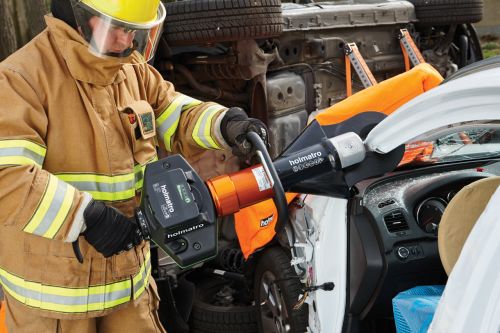When it comes to rescue operations, every second counts. That’s why having the right tools at hand is crucial for first responders. In recent years, battery-powered extrication tools have become a game-changer in emergency situations. These tools are lightweight, easy to use, and can provide rescuers with the necessary power to quickly cut through metal and other materials to save lives.
In this article, we’ll delve into what battery-powered extrication tools are, their benefits, how they work, and their applications in different scenarios.
What Are Battery-Powered Extrication Tools?
Battery-powered extrication tools are high-tech rescue tools used by first responders to cut through metal and other materials during rescue operations. They run on rechargeable batteries and offer significant advantages over traditional hydraulic equipment used in rescue situations.
These tools can be used for cutting, spreading, and ramming tasks. They come in various sizes and shapes depending on the intended application. Some common types of battery-powered extrication tools include:
– Cutters: These are designed to cut through steel, aluminum, and other metals.
– Spreaders: These tools are used to pry open or spread apart objects such as car doors.
– Rams: Used for pushing or pulling heavy objects out of the way.
The Benefits of Battery-Powered Extrication Tools
Battery-powered extrication tools offer several benefits over traditional hydraulic equipment. Here are some of the most significant advantages:
1. Portability: Unlike hydraulic equipment that requires a separate power source such as a generator or pump, battery-powered extrication tools operate on rechargeable batteries. This makes them easy to carry around and use in remote locations without access to electricity.
2. Lightweight: These tools are designed to be lightweight, making them easy to handle and maneuver during rescue operations. They can be operated with one hand, freeing up the other hand for additional tasks.
3. Faster Response Time: Battery-powered extrication tools have a faster response time than hydraulic equipment. They can be turned on instantly and can quickly start cutting through metal and other materials.
4. Quieter: These tools produce less noise than hydraulic equipment, which can be helpful in situations where rescuers need to communicate with each other or the victim.
5. Less Maintenance: Battery-powered extrication tools require less maintenance than traditional hydraulic equipment. They don’t require oil changes, and there are fewer parts that need to be replaced or repaired.
How Do Battery-Powered Extrication Tools Work?
Battery-powered extrication tools work by using an electric motor powered by rechargeable batteries to drive a hydraulic pump. The pump pressurizes the fluid in a cylinder, which then drives the cutting or spreading mechanism.
The battery-powered system provides a consistent power source without requiring additional infrastructure such as generators or pumps. The rechargeable batteries are designed to provide enough power to operate the tool for several hours, depending on the intensity of use.
Applications of Battery-Powered Extrication Tools
Battery-powered extrication tools have a wide range of applications in rescue operations. Here are some examples:
1. Vehicle Rescue: These tools are commonly used in vehicle rescue operations to cut through metal frames and doors to free trapped passengers.
2. Building Collapse: In situations where buildings collapse, these tools can be used to cut through concrete blocks and steel beams.
3. Water Rescue: Battery-powered extrication tools are also useful in water rescue operations where they can be used to cut through boat hulls or other materials.
4. Industrial Accidents: In industrial accidents, these tools can cut through machines and equipment to free trapped workers.
Conclusion
Battery-powered extrication tools have revolutionized rescue operations by providing first responders with portable, lightweight, and easy-to-use equipment that can quickly cut through metal and other materials during emergency situations. With their rapid response time, low maintenance requirements, and consistent power source, these tools are becoming an essential part of rescue operations.
If you’re interested in learning more about battery-powered extrication tools, check out the links below for additional information:
– Wiki Reference: https://en.wikipedia.org/wiki/Hydraulic_rescue_tools
– Authority Websites: https://www.firefighternation.com/2019/10/16/what-to-know-about-battery-powered-extrication-tools/




